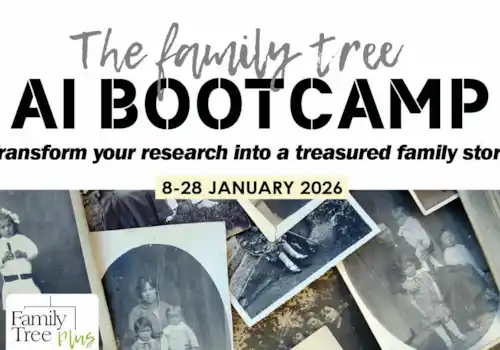How to do a quick tree for DNA… & why you need to. Discover how to do a quick and dirty family tree and learn how it will help you super-charge your DNA family history research.
What is a quick and dirty family tree for DNA?
When do you need to create a quick and dirty tree for DNA?
Which matches should you try to build a quick and dirty tree for?
Tips for building a quick and dirty tree for DNA
1. Remember to use your site's DNA testing site's tools
2. 'Google' their name or username
3. Use living people search websites
5. Build a tree with the information you've found
What is a quick and dirty family tree for DNA?
The aim of making a quick and dirty tree, when doing our DNA research, is to help you swiftly work out possible ways in which you and one of your DNA matches may be related. With a quick and dirty tree you forget about your best practice genealogy processes of checking details thoroughly and corroborating all information you find. Instead you copy from other people’s family trees, you utilise website hints, and you scour social media for clues to people’s names and dates. The aim is to build a possible tree for your DNA match so that you can establish quickly where they fit on your tree.
When do you need to create a quick and dirty tree for DNA?
‘You will have lots of matches with no trees – build a quick and dirty tree for them,’ advises Family Tree DNA Workshop author Karen Evans.
Top tip: ‘Do check that there isn’t a tree lurking in the background,’ says Karen. Maybe your DNA match forgot to link their tree to their DNA test on Ancestry or they are building it on another website.
Which matches should you try to build a quick and dirty tree for?
‘Look for high matches where the name is distinguishable,’ continues Karen. ‘Often put their first name and surname together and add numbers which correspond to year of birth or age. Try to go for male matches, as women may be using their married name (though that’s not always the end).’
Do you get the idea? You are needing to work quickly, starting with the information that is in front of you, and – although you are working quickly – you are also gleaning every crumb of information from it!
Here are some of the tips and tricks that Karen Evans used to build a tree with the limited information of only a name.
Karen Evans has written a detailed guide to building a quick and dirty tree for Family Tree. Order your June copy!
Join the Quick & Dirty Trees DNA Masterclass: 21 & 28 Oct, 7-9pm, £45/40
Tips for building a quick and dirty tree for DNA
1. Remember to use your DNA testing site’s tools
- Check to see which side your match is from – if you have clustered your matches you may know which branch they belong to.
- Even if that cluster is unknown to you, there could be trees that give hints to a common surname or geographic area.
2. 'Google' their name or username
Many people use the same username, and profile pictures regardless of site. Does their username pop up on any genealogical chat sites? Do you recognise their photo?
On FamilyTreeDNA and Gedmatch you may be able to see that a match has an attached email address that you can also Google. At the very least the address could show the country where a match may be living.
3. Use living people search websites
There are many websites dedicated to finding people, and their basic searches are free. If it’s a US match there is even more information online which could include names, ages, possible family links and places of residence. Sites include:
- www.fastbackgroundcheck.com/people/
- mylife.com
- & www.whitepages.com/
If it’s a UK match, then you could use 192.com People Finder (www.192.com/people/).
4. Investigate social media
You can search for names in Facebook, Twitter, LinkedIn etc and see whether your match has a profile. This wouldn’t work for a very frequently found name. But it may for someone with a more distinctive name. If you manage to identify your DNA match, use their friends’ list on Facebook - as it you can sometimes build up a list of relatives’ names.
5. Build a tree with the information you've found
Often the hardest part to a quick and dirty tree is getting started. You need that first nugget of information that takes the match’s name to their parents then you can start building their quick and dirty tree.
Finding the age of your match is going to be important, since you need to get to records to build the tree.
Look for geographical places that are common to your own. It makes sense to concentrate in the first instance on DNA matches who share places you have in common.
Top tip!
Don’t be put off if a match and their first few generations of ancestors are from America. I was surprised how many trees quickly led back to people who had emigrated, and this then gave me the most likely branch to pursue. Remember that the United States has released the 1950 census so your matches may be on it and there is a very good chance their parents are.
For further information on working with DNA matches who don't have a family tree, Karen Evans recommends a free video by Rootstech
Join the Quick & Dirty Trees DNA Masterclass: 21 & 28 Oct, 7-9pm, £45/40







